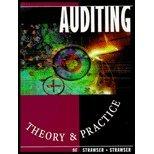EARNINGS MANAGEMENT AND FRAUD PROJECT-Spring 2020 1. Upon reviewing the bank reconciliation, you realized that the general ledger had not been adjusted for $200 worth of NSF checks received for cash sales. The amounts of the individual checks were too small to make it worthwhile to turn them over to an attorney for collection. While testing the inventory counts, the auditors noticed that several high dollar items had counts on the inventory listing which were materially higher than the actual counts. The difference between the actual and recorded inventory value was $47,000. While comparing the current and prior year inventory schedules you noted that several products had approximately the same quantities. Upon further investigation you determined that the items had very little or no activity during the year. The inventory in question had a recorded value of $52,000. Upon discussions with sales and warehouse personnel, you learned that the items were prior versions of products, and were no longer offered for sale in the product catalog. You were also told that they will probably be thrown out rather than be sold through alternative distribution channels. While reviewing the inventory listing you noticed that certain items were counted by the unit, but priced per the case. The difference between the actual and recorded inventory value was $78,000. While testing items in the December sales journal, you noted that shipping documents indicated that $70,000 in sales (cost of $48,000) were not actually shipped until January of the new year. The related inventory was counted and listed on the year-end inventory summary EARNINGS MANAGEMENT AND FRAUD PROJECT-Spring 2020 1. Upon reviewing the bank reconciliation, you realized that the general ledger had not been adjusted for $200 worth of NSF checks received for cash sales. The amounts of the individual checks were too small to make it worthwhile to turn them over to an attorney for collection. While testing the inventory counts, the auditors noticed that several high dollar items had counts on the inventory listing which were materially higher than the actual counts. The difference between the actual and recorded inventory value was $47,000. While comparing the current and prior year inventory schedules you noted that several products had approximately the same quantities. Upon further investigation you determined that the items had very little or no activity during the year. The inventory in question had a recorded value of $52,000. Upon discussions with sales and warehouse personnel, you learned that the items were prior versions of products, and were no longer offered for sale in the product catalog. You were also told that they will probably be thrown out rather than be sold through alternative distribution channels. While reviewing the inventory listing you noticed that certain items were counted by the unit, but priced per the case. The difference between the actual and recorded inventory value was $78,000. While testing items in the December sales journal, you noted that shipping documents indicated that $70,000 in sales (cost of $48,000) were not actually shipped until January of the new year. The related inventory was counted and listed on the year-end inventory summary







